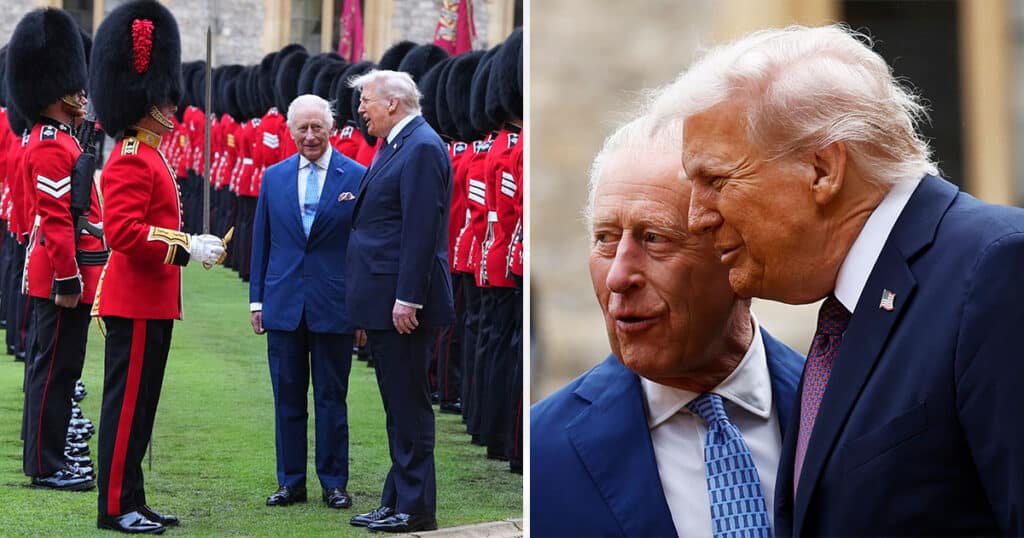Donald Trump’s return to the UK unfolded with all the ceremony a state visit promises: the sweep of motorcades through Windsor, the hush of historic halls, and the choreography of handshakes that say as much as speeches. After arriving late Tuesday and spending the night at the castle, the president and First Lady Melania Trump stepped into a tightly scripted Wednesday—private meetings with King Charles, greetings from Prince William and Kate Middleton, a military welcome on the lawn, a Red Arrows flyover slicing color into the sky, then the glitter of a state banquet.
For all the precision, one unscripted beat drew the eye. During the troop review—a moment where protocol is practically a character on stage—Donald Trump moved first. King Charles appeared to motion for the president to pause, to hold position while the inspection cadence was set. Instead, Trump began to walk. Cameras caught Charles a half-step behind, wearing what looked like a polite half-smile that didn’t quite reach ease. It echoed a 2019 tableau with the late Queen Elizabeth, when Trump briefly forged ahead during a similar inspection and set the internet ablaze over etiquette.
This time, the debate reignited with a layer of body-language analysis. Speaking for OLBG, expert Inbaal Honigman described a king caught in a split-second bind. Charles, she said, gave a forward gesture—likely intended as a cue to stand fast—but as the president moved off, the monarch’s micro-adjustments betrayed tension. He smoothed his tie (a classic self-soother), kept his hands slightly taut, and hovered between two choices no host relishes: correct a guest publicly and risk awkwardness, or absorb a breach of choreography and let the moment pass.
Honigman’s read cast Trump as largely oblivious to the hitch—confident he was doing precisely what the moment required—while the king tested subtle fixes. At one point, Charles edged to place himself between the president and the Guard, a quiet attempt to re-center the frame. When Trump shifted again, unintentionally blocking that effort, the king took the simplest path through the tangle: he laid a guiding hand on the president’s back. The touch landed like a diplomatic reset, the kind that turns a miscue into a planned pivot. By the time they turned back toward their seats, Charles had eased into the lead once more.
None of this happened in a vacuum. Troop inspections are miniature rituals—who moves first, who sets the pace, who stands where—and royal hosts are trained to make course corrections invisibly. Foreign leaders bring their own instincts to the same script, and what looks like protocol drift is often no more than muscle memory from a different playbook. That’s why such moments are Rorschach tests: some see a breach, others see brisk confidence, and still others notice only the reassuring hand at the end.
What lingers is the contrast between ceremony at its most orchestrated and diplomacy at its most human. Even on a day polished for the history books, there’s room for improvisation—and for a host who knows how to turn a near-miss into a photo that looks exactly as planned.
